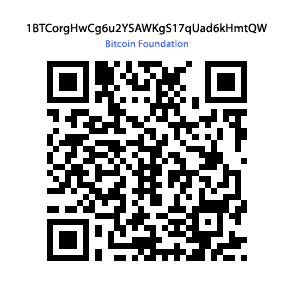
So with all of that, how did those methods of x-for-y advance up to today, where currency doesn’t have to be physically tangible, like with payment-god and eBay partner, PayPal? Since 1982, the value of the United States dollar has inflated nearly 150 percent, according to the United States Bureau of Labor Statistics’ CPI or consumer price index. Alternatively, Bitcoin’s simple algorithm that controls the amount of Bitcoins in circulation prevents inflation and provides a relatively predictable and interference-free economy.
In 2009, Japanese software design student who worked under the alias “Satoshi Nakamoto” decided the centralized control of a currency was no longer beneficial as an economic model. Combined with experience in cryptography and program development, the first concept for Bitcoin became. Of course, this was not the first Internet currency with no physical objects to hand over between person x and person y. e-gold was developed in 1996 by Gold & Silver Reserve Inc. until a series of fraud and deception eventually pushed the concept out of business and out of practice–but the spark was there, and with some fine-tuning, digital currency made its debut into the mainstream world of foreign currency.
According to Bitcoin’s website, Bitcoin.org, “Bitcoin is designed around the idea of a new form of money that uses cryptography to control its creation and transactions, rather than relying on central authorities.”
Bitcoin is not an organization; there are no central servers. Bitcoin is an open source algorithm. Anyone with a connection to the Internet can look at how Bitcoin works, in its most raw form: the source code..
Transactions in the Bitcoin network work by peer to peer connection. When a user of the Bitcoin network initiates a transaction, the network registers the currency as being transferred.
The network proceeds to deduct from the senders account, the desired amount of currency, and send that amount to the address of the receiver.

Aside from Bitcoin’s transparency policy and versatile interface—its ability to be used as a currency virtually anywhere–Bitcoin’s anonymity proposes an entirely new aspect to the face of BTC (BTC is to Bitcoin as USD is to the dollar). Although all transactions are recorded in the blockchain, a public record of every single Bitcoin transaction, Bitcoin transactions are entirely anonymous. The transactions are irreversible as well, and generally cost next-to-nothing for transactions to process. This proposes an entirely new financial concept.
Unless published, it is impossible to trace a Bitcoin address back to the owner. Unless published, no one but the owner of the wallet will know how many Bitcoins they have. Finally, the anonymity allows Bitcoin to have no sense of borders. It is impossible to tax Bitcoin transactions, and those transactions can go anywhere in the world with a half-decent Internet connection.
Unfortunately, this portable nature and anonymous currency can also bring illegal transactions as well. Using TOR, an Internet browser designed to surf the web completely anonymously, users can navigate through regions of the web that they wouldn’t dream of in a normal browser (which can track a client’s Internet usage).
Already, the complete cut of third-party oversight between transactions has piqued the interest of governments and anti-financial crime organizations, such as FinCEN. Blurring the line between user and administrator, Bitcoin has been a scary concept that has gained traction, after the market value of all Bitcoins in circulation peaked $1.3 billion USD. In a new world where regulation and taxation of transactions are impossible, Bitcoin has the potential to become a viable method of payment for years to come.
By Alex Gompper












































































